Sun 1 Jul 2018
Of fire, snakes, and families staying together
Posted by DavidMitchell under Dave Mitchell, West Marin nature, Wildlife
[2] Comments
It’s been a mixed week.
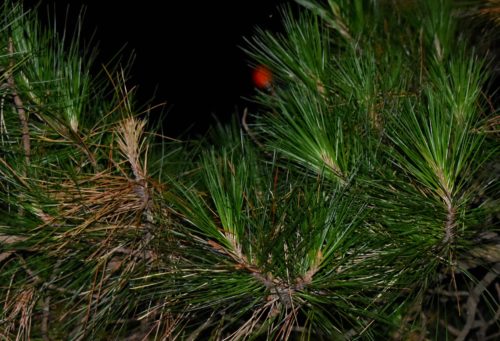
Last evening I was amazed to look out a bedroom window and see a red ball shining in the eastern sky. Lynn and I realized that the Lake County fire was the explanation. News reports said smoke from that fire was blowing south into the San Francisco Bay Area. As of this writing, the Pawnee Fire in Lake County has burned 14,150 acres and is only 73 percent contained.
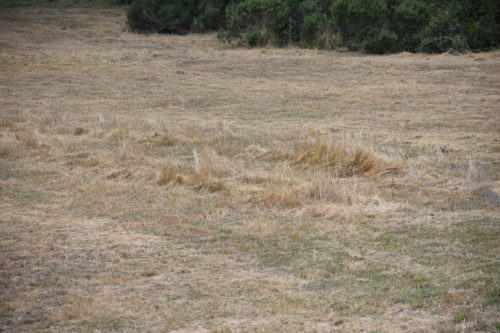
Not wanting any wildfires here, I’d hired some guys to mow the fields around Mitchell cabin and neighbors Dan and Mary Huntsman’s home. All went well except for this one patch in the middle of a field that wasn’t cut all the way down. Much of the land was mowed using a tractor, but when the tractor operator got to this spot, he suddenly came under attack from a colony of yellow jackets which had a hive in the ground. I could have had the hive destroyed but opted not to since yellow jackets can be beneficial: they dine on flies and spiders.
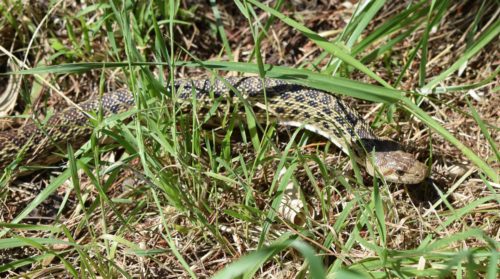
This gopher snake showed up at the edge of the garden the same weekend two months ago when Lynn and I were married. I decided that was a good omen since we were overrun with gophers.
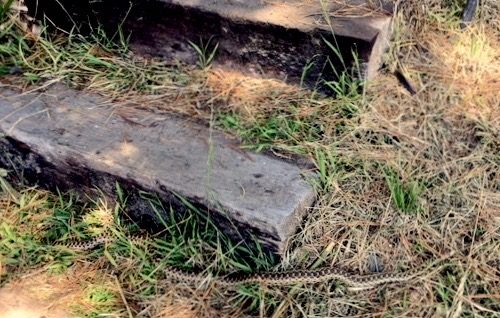
Today, Lynn spotted this four-foot-long gopher snake on our front steps. To give you a sense of scale, the railroad ties that make up the steps are three feet long. This snake’s tail winds through the grass up to the step and back down where it disappears on the left side of the photo. (Photo by Lynn Axelrod Mitchell)
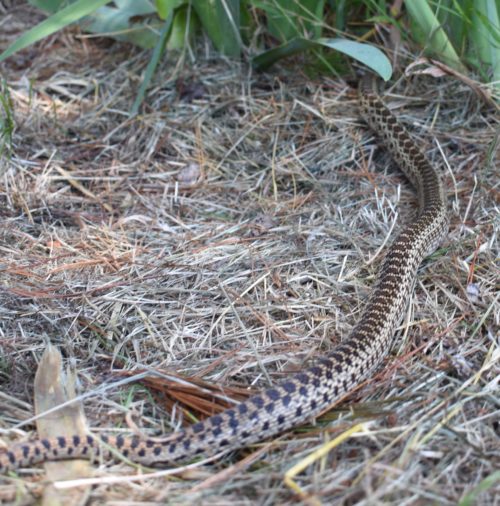
I was impressed by the snake’s girth and snapped this photo of it.
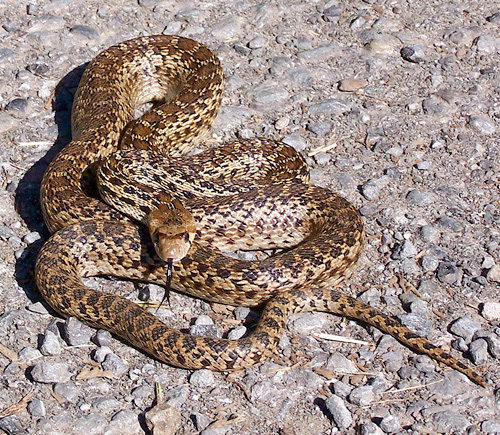
There are numerous variations in the coloring of gopher snakes, but most retain a rattlesnake-like hide. In fact, when gopher snakes feel threatened, they try to imitate rattlesnakes, hissing, coiling up, and shaking their rattleless tails. A week ago I was driving home up Campolindo Road when I spotted a gopher snake that looked like this one, lying across the narrow roadway. Not wanting anyone to drive over it, I stopped, got out, and walked over to the snake, which did not move. I then leaned over and grabbed the snake right behind its head. The snake hissed and tried to turn its head but couldn’t, and I carried it into the grass and let it go.
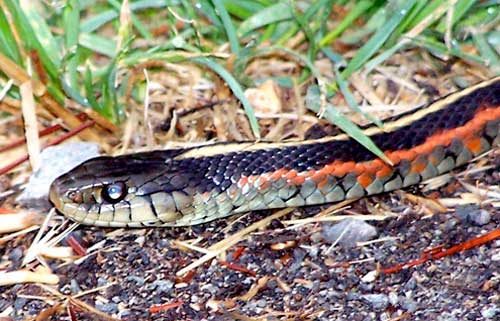
Garter snakes could be found around here fairly often 25 years ago, but the only ones I’ve seen recently were along the levee road. When I moved one of those out of the roadway a while back, I got a dose of the stench garter snakes spray when they feel under attack.
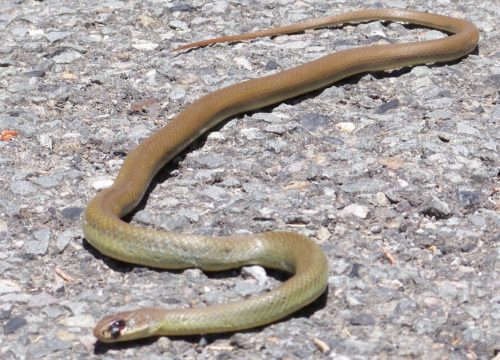
A rubber boa with a tick on its eye. These seldom-seen snakes (they hunt in the evening or at night) can also emit a stinky spray when frightened. Mice and voles are among their main prey.

I found this Pacific ring-necked snake in a rotten log while splitting firewood, as was reported here awhile back. The snake eats very small creatures, tadpoles, insects, and especially salamanders. It has just enough venom to immobilize them but is not dangerous to humans.
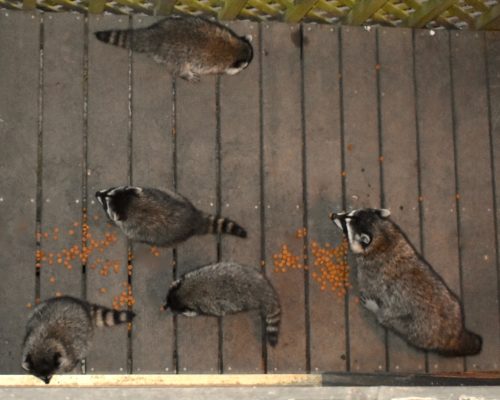
A mother raccoon and her four kits receive a few handfuls of dog kibble when they show up in the evening. The kits are usually weaned by the the time they are four months old but often stay with their mothers for up to nine months.
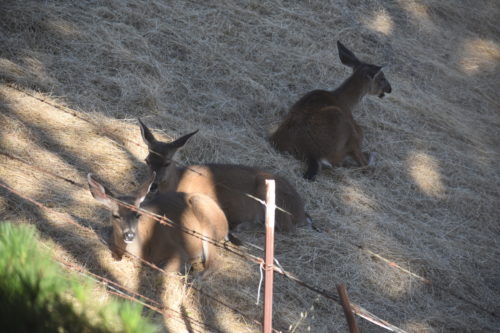
A blacktail doe with two offspring are also staying together. Here the family rests contentedly after crossing the barbed-wire border between fields without getting separated. Under the current Administration, human refugees apparently deserve less.

So glad that you’re preserving the predators on your property; this is the best, and most efficient means of keeping the other critters to a manageable level. Of course, this is also a very controversial strategy – as described in this recent piece on the New York Times site about the struggles between ranchers and wolves https://www.nytimes.com/2018/07/05/magazine/whos-afraid-of-the-big-bad-wolf-scientist.html
Thanks for all the snake pictures — I love snakes and don’t get to see too many here in SF.